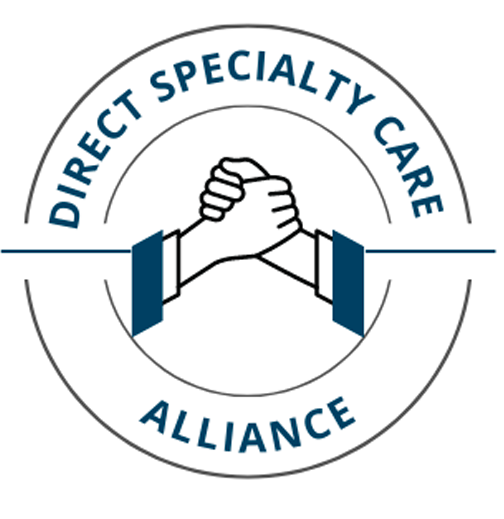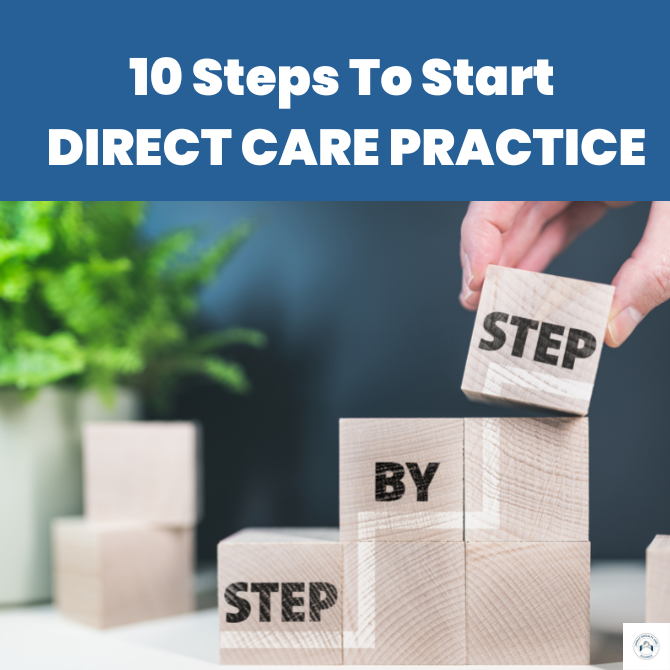This year, I wrote an article that was published in KevinMD.com, one of the largest medical blogs in the United States. I think it is important for specialist physicians to know that they can practice medicine in their own terms.
Direct specialty care is not a new way of practicing, it is rather the “old-fashion way” of practicing, where patients and physicians are professionally and respectfully engaging in a direct relationship where they are accountable to each other. Here is the article that was published in June 17, 2022.
“Three years ago, I was a physician in the “traditional” medical system seeing 25 to 28 patients every day. I spent hours writing notes to provide proper documentation for the correct billing code. Often, my time was spent calling insurance companies to justify the appropriateness of my medical care. More and more hours were spent on completing tasks for insurance companies rather than patient care. Like many of my colleagues, I asked myself: Is this medicine that I prepare for? As I knew complaining is not going to help, I decided to take action. In less than one year, I started my direct specialty care practice. Since the interest in this way of practicing grows every day, I will share ten steps to help other specialists consider an alternative way of practicing medicine: direct specialty care.
1. Understanding the “direct care” concept
About ten years ago, a few primary care physicians rebuilt their relationship with patients by creating “direct primary care” clinics. Removing the insurance companies’ involvement, these physicians contracted directly with patients, and, for a monthly membership fee, patients were able to access medical services when needed.
For many years, specialists were hesitant to join this concept due to constant fear that they lack a referral system to feed patients to their door. However, in the free medical market, patients feel empowered to search, compare and pay for the medical care that they need. Direct specialty care started to contour, and more specialists recognized this as an alternative medical care model. The result is decreased physician’s burden in documentation, billing, and coding for insurance companies. Physicians and patients become accountable to each other. The medical services are accessible, affordable, and all the prices are transparent.
2. Financial aspects of your business
Physicians often think they are not good enough to run a business. I am afraid I must disagree. As you learn to become a physician, there is a learning curve to become educated about your business. It would be best to remain open to learning and educating yourself regarding your business. You will make mistakes and invest time and money, but remember, those investments are made in your company. Things to consider for your tentative business plan should include legal services (to start and incorporate your business), office expenses (renting, furniture, remodeling), staffing expenses (local vs. virtual medical assistant), electronic medical records cost, phone/ fax, marketing efforts, accounting costs.
3. Legal aspects of your business
It is best to find a health lawyer familiar with the “direct care concept” that will help create your business entity, build your agreement with the patients, or review your website content.
4. Decide on telemedicine vs. local practice
Consider different aspects if you plan to start a local vs. a telemedicine practice. Some physicians are practicing both. They offer local services and add telemedicine as a convenient perk for patients who are their practice members. Other physicians are planning to see patients only through telemedicine in multiple states. Consider obtaining licensing in states where there is high demand for your specialty. Licensing can be an expensive and tedious process.
5. Transitioning into “direct care”
If you already have a private practice that has insurance contracts, you should analyze who are the best vs. the worst payers for your practice. Start the transition by gradually canceling financially disadvantageous contracts in your practice.
If you are starting a brand-new direct specialty care practice, begin to educate your patients about direct care. Open a registration page where patients can list their emails. While building your panel of patients in direct care, be open to accepting locum positions, moonlighting at local hospitals or clinics, or accepting side gigs (e.g., independent medical reviewer).
6. Create a website
Your website is your property, and it will be the first interaction with your patients. These days, the patient will “google” your specialty and see your website before they come to see you. You may build your website or partner with a web designer. Make sure patients find helpful information about direct care on your website.
7. Electronic medical records (EMR)
Choosing an electronic medical system where you own your patients’ medical information. There are many options, but none is perfect. I prefer to access my patient’s chart from anywhere, so I choose a cloud-based EMR.
8. Direct contracting
Direct contracting with the patient removes the “middlemen” from all the aspects of medical care. Why is it important? Any extra layer between the physician and patients will translate into additional medical costs. Contact laboratories, imaging centers, independent pharmacies and ask for “client” prices. These are discounted rates between your practice and these facilities. You will be surprised that these prices might be even ten times lower than those charged through insurance companies. Ultimately, patients will be the ones to pay the extra money, and they appreciate you offering price transparency for medical care.
9. Pricing models
Deciding on the price model you want to offer could be difficult. You may choose to provide fee for service, bundle pricing for services, or a membership model for chronic management. There is not much information about reference pricing besides Medicare’s reference.
10. Decide to remain or opt-out of Medicare
If you become a direct care specialist, you have a few options. Continue to see Medicare patients, for which you should sign a contract and submit billing to Medicare. The alternative is to opt-out of Medicare and charge cash pricing to these patients. This is what most physicians in direct care choose to do.
During this journey, be prepared to learn, evolve, and reconnect with many fellow physicians. You will soon find out that patients are also eager to shop for their health and discover transparent pricing and excellent medical quality. Join the movement of Direct Specialty Care, where you will find resources and a network of physicians practicing direct care. Regain hope and start practicing medicine for the benefit of our patients.
Author
Diana M. Girnita is a rheumatologist and founder and CEO, Rheumatologist OnCall. She can also be reached on Facebook, Instagram, and YouTube.”





